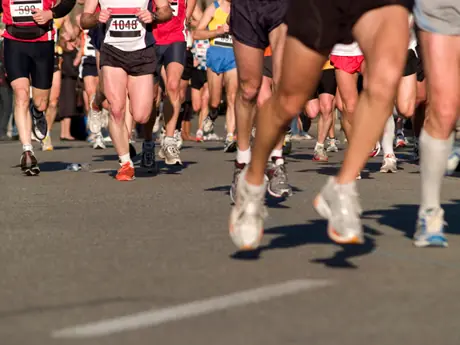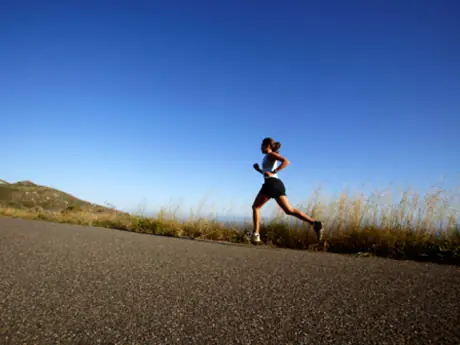45 Minutes In
Begin to refuel. Take in gels and fluids at least every three-quarters of an hour during your run. "By fueling early, you are less likely to deplete your stores," says Nisevich Bede. "And if you take in bits of fuel at a time and chase with water, you'll absorb it better and are less likely to have GI distress."
What to Do One Week Before Your Race
15 Minutes to Finish
Tough it out. "As you get toward the end of the run, the fatigue curve ramps up," McMillan says. You have to increase your focus and intensity to maintain the same pace. But keeping your pace constant, or even picking it up a bit, is crucial to reaping maximal gains. McMillan recommends using mantras for those soul-searching moments. "Run tall" helps athletes clean up late-run form problems like slouching and cross-body arm swings. And "nice, light stride" reminds them to avoid shuffling.
More: 10 Motivational Quotes for Runners
Done!
You'll want to collapse on the couch. Don't. "You should immediately start taking in fluids," says Shay. Rehydration comes in many forms: water, sports recovery drinks, smoothies, even chocolate milk. Within 30 minutes, Shay also suggests carbs for glycogen replacement and boosting the immune system, plus protein to aid in muscle repair. How those carbs and proteins come—whether in drinks, solid food, or a mix of both—is a matter of individual preference and depends on what your stomach is able to handle. "But you want about 300 to 400 calories total," she says, "with a carb-to-protein ratio of 3 or 4 to 1."
More: 3 Post-Workout Meals That Lower Inflammation
Within One Hour After Your Run
Stay active. Find a routine that helps you avoid the onset of soreness and tightening that can follow a hard effort, whether that's a session of active stretching or a walk around the block with your dog. Duane Button, an assistant professor of exercise science at Memorial University of Newfoundland in Canada, has found that subjects who used foam rollers on their leg muscles following workouts experienced less soreness and recovered faster than those who didn't.
Although he hasn't done studies specifically with runners, he'd "speculate that foam rolling would help runners recover from a long-distance run." He recommends performing a full lower-body foam roll, including your calves, hamstrings, quadriceps, glutes, and IT bands. Roll the bottoms of your feet on a smaller roller or a ball.
- 2
- of
- 3
About the Author

Get ACTIVE on the Go


Couch to 5K®
The best way to get new runners off the couch and across the finish line of their first 5K.
Available for iOS | Android







Discuss This Article